Here’s a guide on how to put a bonnet on straight hair. Read on to find out the right way of wearing a bonnet on straight hair!
Have you ever struggled to keep your straight hair looking sleek and smooth overnight? A hair bonnet might be just what you need. This fantastic accessory not only helps maintain your straight hair, but also promotes healthy hair growth and protects your tresses from friction while you sleep.
If you’re new to the world of hair bonnets, don’t worry – putting one on is easy. With a few simple steps, you’ll be able to rock your straight hair bonnet like a pro and wake up with fabulous hair every day. So, let’s explore the process of wearing a bonnet and keeping your straight hair looking fabulous.

Page Contents
Key Takeaways
- Hair bonnets protect your straight hair, promote growth, and prevent damage.
- Choose a material that’s suitable for your hair type and comfortable to wear overnight.
- Master the simple process of putting on a bonnet and wake up with fabulous hair.
How To Put A Bonnet On Straight Hair
Here’s a quick summary:
There are a few things you can do to put a bonnet on straight hair:
- Start with clean, dry hair. This will help the bonnet stay in place and prevent your hair from becoming frizzy.
- Brush your hair until it is smooth and free of tangles. This will help to distribute the bonnet evenly and prevent it from pulling on your hair.
- Put on the bonnet. Start by gathering your hair at the nape of your neck. Then, place the bonnet over your head and pull it down so that it covers all of your hair.
- Tie the bonnet in place. Most bonnets have a tie or drawstring that you can use to secure them. Tie the bonnet snugly, but not too tightly, so that it does not cause discomfort.
- Adjust the bonnet as needed. If the bonnet is too tight or too loose, adjust it accordingly. You may also need to adjust the position of the bonnet so that it covers all of your hair evenly.
I’ll discuss each step in detail further into the article. Read on!
Understanding Hair Bonnets
Hair bonnets are a fantastic way to preserve the health and appearance of your straight hair. I’ve found that satin and silk bonnets are ideal for keeping your hair smooth, frizz-free, and tangle-free.
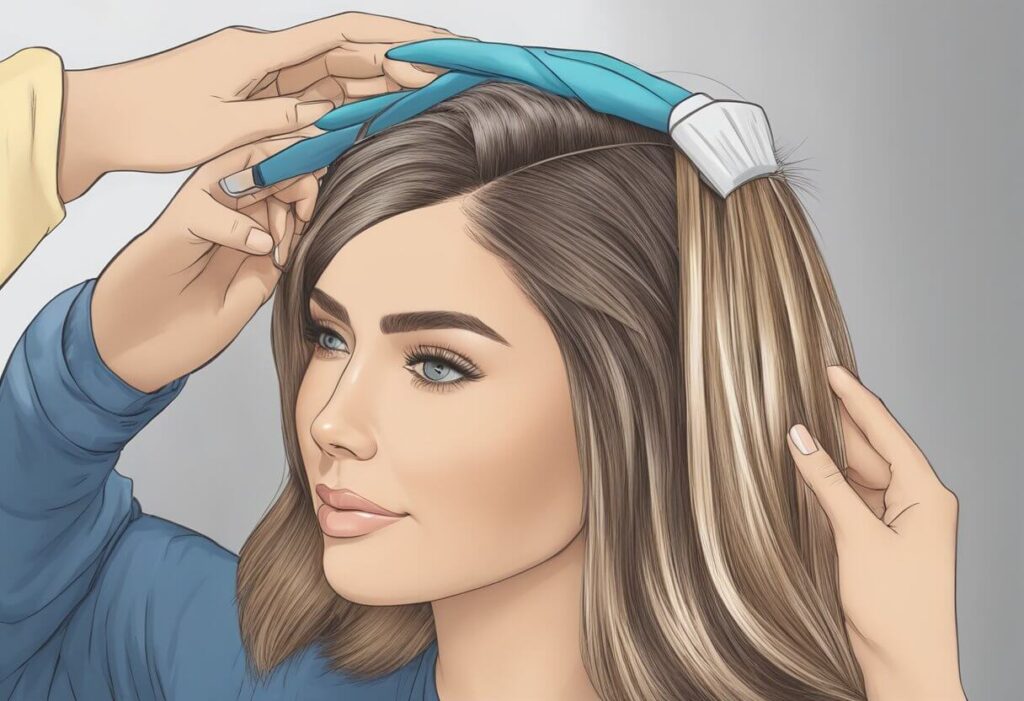
These materials help to reduce friction caused by regular pillowcases, which can lead to breakage.
When it comes to satin bonnets, they are lightweight and gentle on your hair. Satin is a synthetic material that mimics the feel of silk but is more affordable.
I love my satin bonnet as it retains the moisture in my hair and prevents it from becoming dry and brittle.
Silk bonnets, on the other hand, are made from natural fibers, making them hypoallergenic and even more breathable.
Using a silk bonnet has significantly improved the overall health of my hair. It’s the perfect solution for eliminating frizz and maintaining my sleek, straight locks.
To find the right bonnet for your hair, I recommend considering its size, flexibility, and durability. You’ll want a hair bonnet that fits securely but comfortably on your head.
High-quality bonnets should retain their shape and elasticity even after being used and washed many times.
In my experience, investing in a high-quality bonnet has made a significant difference in the maintenance of my straight hair.
So take your time to explore and choose the right bonnet to get the best results for your hair’s specific needs.
Whether it’s a satin or silk bonnet, your hair will thank you in the long run.
Why Wear A Bonnet?
As someone who has straight hair, I’ve found that wearing a bonnet can be incredibly beneficial for maintaining healthy hair and keeping it looking great. One of the main reasons to wear a bonnet is to protect our hair from potential damage.

Bonnets can shield our hair from friction or rubbing against pillows during sleep, which helps prevent frizz, split ends, and breakage.
Another important reason for wearing a bonnet is to retain moisture in our hair. Keeping our hair hydrated and moisturized is essential for optimal hair health and appearance.
A bonnet essentially acts as a barrier that seals in the moisture, preventing it from evaporating during the night. As a result, we wake up with hair that’s well-hydrated and ready to face the day.
The benefits of using a hair bonnet extend beyond just keeping our hair moisturized and frizz-free.
They can also help keep our locks clean and free from dust or allergens, which is especially useful for people with allergies.
In my experience, wearing a bonnet has been a game-changer for my hair care routine. The benefits of healthier, more hydrated hair definitely make it worth giving a bonnet a try.
So, if you have straight hair and are looking for ways to improve your hair health, consider incorporating a bonnet into your nightly routine.
Choosing A Bonnet Made Of The Right Material
When I first decided to invest in a bonnet to protect my straight hair, I realized how important it is to choose the right material. With so many options available on the market, it can be quite confusing.
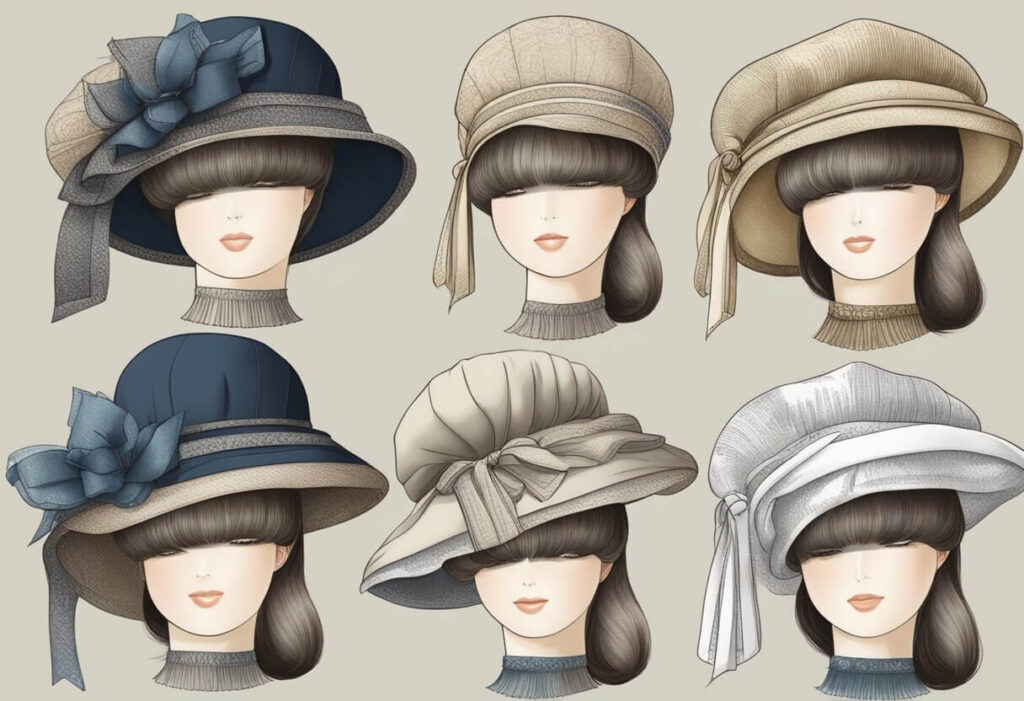
But don’t worry, I’m here to help you make the best decision for your hair.
Silk and satin are the top choices for bonnets due to their smooth texture and ability to reduce friction while you sleep. Both materials help in retaining moisture in our hair, which is essential for maintaining its health.
Personally, I prefer silk because it’s a natural fiber, hypoallergenic, and tends to be more durable than satin.
However, satin bonnets are a more affordable option. You can find two types of satin materials while shopping for bonnets: natural satin and synthetic satin.
Natural satin, made from silk fibers, is more expensive but offers the same benefits as pure silk.
Synthetic satin, on the other hand, is made from polyester fibers and is more cost-effective. While synthetic satin may not give you the same luxurious feel as natural satin or silk, it still provides a smooth surface for your hair.
One thing to note while choosing your bonnet material is to avoid materials like cotton or harsh synthetics.
These tend to absorb moisture from your hair and cause friction, which can lead to hair breakage and frizz.
In conclusion, both silk and natural satin are excellent choices for a bonnet to protect your straight hair, while synthetic satin can be a budget-friendly alternative. Just remember, the right material is crucial for keeping your hair healthy and frizz-free!
How To Put On A Bonnet
I always find it essential to keep my straight hair in perfect condition. One way I do that is by using a bonnet to protect my hair while sleeping.
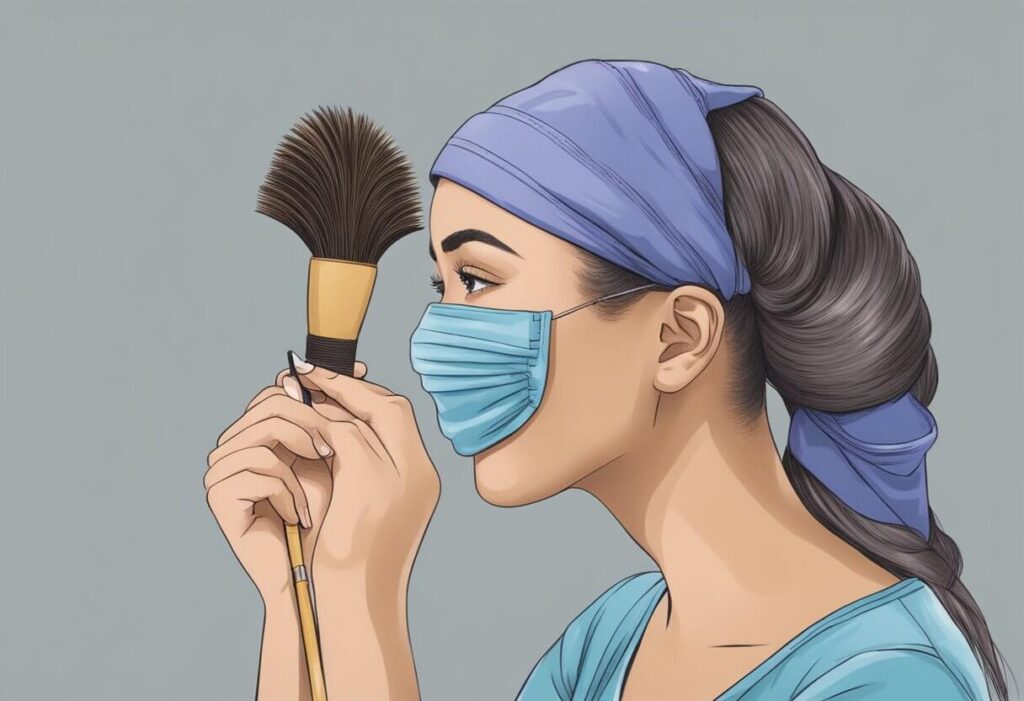
Putting on a bonnet might seem simple, but there are some crucial steps to follow to ensure it stays secure and doesn’t damage your hair. Here’s how I put on a bonnet for my straight hair.
First things first, I make sure I’ve got a bonnet with a good elastic band. An elastic band that fits comfortably ensures that the bonnet will stay in place all night. Too tight, and it might cause discomfort or headaches; too loose, and it won’t provide the necessary protection.
Next, I prepare my hair by gently brushing it to remove any tangles or knots. This step is especially important for me since I have straight hair – detangling helps maintain its smooth and sleek appearance.
Once my hair is tangle-free, I gather it at the nape of my neck, holding it with one hand. This not only helps keep my hair smooth but also makes putting on the bonnet a lot easier.
Now comes the actual process of putting on the bonnet. I hold it with my free hand, positioning the elastic band at the hairline on my forehead.
With the bonnet in place, I carefully pull the elastic band down towards the nape of my neck, making sure to cover all of my hair.
To ensure that the bonnet stays put throughout the night, I double-check the position of the elastic band. It should be sitting comfortably yet securely, just below the hairline at the nape of my neck.
If needed, I gently adjust the band so that it feels snug but not too tight.
With these steps, my straight hair stays protected under a well-fitted bonnet. This method helps maintain the health of my hair and keeps it looking fabulous each morning.
Maintaining Your Straight Hair
I love my straight hair, but sometimes it can be a struggle to keep it looking sleek and frizz-free. I’ve learned some great tips to help maintain straight hair and keep it looking fabulous.
One critical aspect I always consider is minimizing friction. Constant rubbing against pillowcases, towels, or even my hands can lead to frizz and damage. To prevent this, I opt for satin or silk pillowcases that reduce friction while I sleep.

When drying my hair, I love using a microfiber towel instead of a regular one, as it’s gentler and less likely to cause frizz.
Next, I ensure that I use the right products for my hair type. Using lightweight products, such as leave-in conditioners and hair oils, not only keep my hair moisturized, but also help in improving product retention.
This way, my hair stays shiny and smooth after styling. I avoid using heavy products that weigh my hair down and lead to a greasy appearance.
In order to keep my locks from looking tousled, I use a wide-tooth comb or a boar bristle brush to gently detangle my hair. These tools help distribute my hair’s natural oils evenly, giving it a much-needed shine.
I also take this opportunity to give my scalp a light massage which promotes circulation and hair growth.
To maintain my sleek, straight hair, frequent touch-ups are essential. A high-quality flat iron with adjustable heat settings is my go-to tool for this. I pay close attention to the temperature to avoid unnecessary heat damage.
Regular trims, preferably every 6-8 weeks, also contribute to healthier, shinier hair by eliminating damaged and split ends.
By incorporating these simple steps into my hair care routine, my straight hair stays frizz-free, shiny, and fabulous all day long.
Secure Your Hair Properly Before Wearing A Bonnet
When it comes to keeping my straight hair intact while wearing a bonnet, I’ve found that securing my hair properly is crucial.
To do this, I typically start by choosing a hairstyle that will both prevent tangles and hold up well beneath the bonnet. One of my go-to’s is a loose bun at the nape of my neck.

This style helps keep my straight hair smooth while avoiding the risk of creases or kinks that might form with a tight ponytail.
Additionally, I can tie the bun with a soft hairband to minimize the possibility of hair breakage.
Another hairstyle option I’ve tried when using a bonnet is the ever-popular pineapple method.
By flipping my hair upside down and gathering it at the very top of my head, I create a high, loose ponytail resembling a pineapple.
This technique works particularly well with longer hair lengths and is an effortless way to maintain straight locks overnight.
Once my chosen hairstyle is in place, I turn my attention to those pesky stray hairs that can be problematic when wearing a bonnet.
To secure them, I find using bobby pins and hair clips to be highly effective.
Gently sweeping back any loose strands and pinning them in place ensures that no hair escapes from the bonnet, which could lead to tangles, frizz, or even damage to my hair.
Incorporating these tips into my regular bonnet-wearing routine has not only made a noticeable difference in the preservation of my straight hair but has also made the process of putting on a bonnet far less daunting.
Additional Benefits Of a Bonnet
When I first started using a bonnet for my straight hair, I quickly discovered there were more benefits than just preserving my hairstyle.
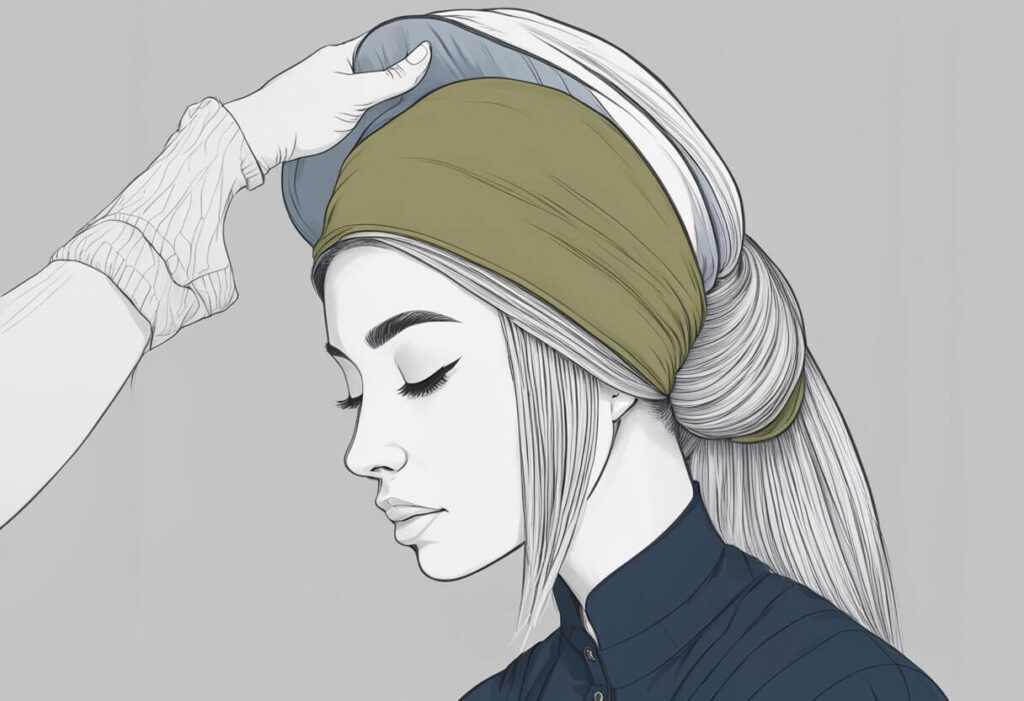
One of the things I noticed was that my pillowcases stayed much cleaner.
The bonnet acts as a barrier between my hair and the pillowcase, helping reduce the transfer of oils and hair products. This means less frequent washing of pillowcases, saving both time and water.
Wearing a bonnet while I sleep also helps reduce pressure on my hair. Tossing and turning at night can cause hair strands to rub against the pillow, creating friction and potentially leading to breakage and split ends.
The bonnet helps to minimize this friction, keeping my hair healthy and strong, especially when I have recently straightened it.
Another benefit I’ve found is improved circulation in my scalp. Some people might be concerned that wearing a bonnet is too constricting, but I’ve discovered that the right fit actually promotes better circulation.
It’s essential to choose a bonnet with the proper elasticity – snug enough to stay in place while I sleep, yet not so tight that it causes discomfort or restricts blood flow.
A surprising advantage of wearing a bonnet at night is the added warmth it provides. Known initially as a sleeping cap, the bonnet is designed to trap heat, keeping my head cozy during colder nights.
Its insulating properties can be particularly beneficial in maintaining an overall comfortable body temperature while asleep.
In conclusion, using a bonnet for my straight hair has not only helped me maintain my hairstyle, but it has also provided several additional benefits, from cleaner pillowcases to improved scalp circulation.
Give it a try for yourself, and you might be pleasantly surprised by the results.
Hair Care And Bonnets
Taking care of my hair has always been important to me. No matter if I have long hair, natural hair, curly hair, or straight hair, the goal remains the same: promoting healthy hair growth and maintaining a good hair care routine.
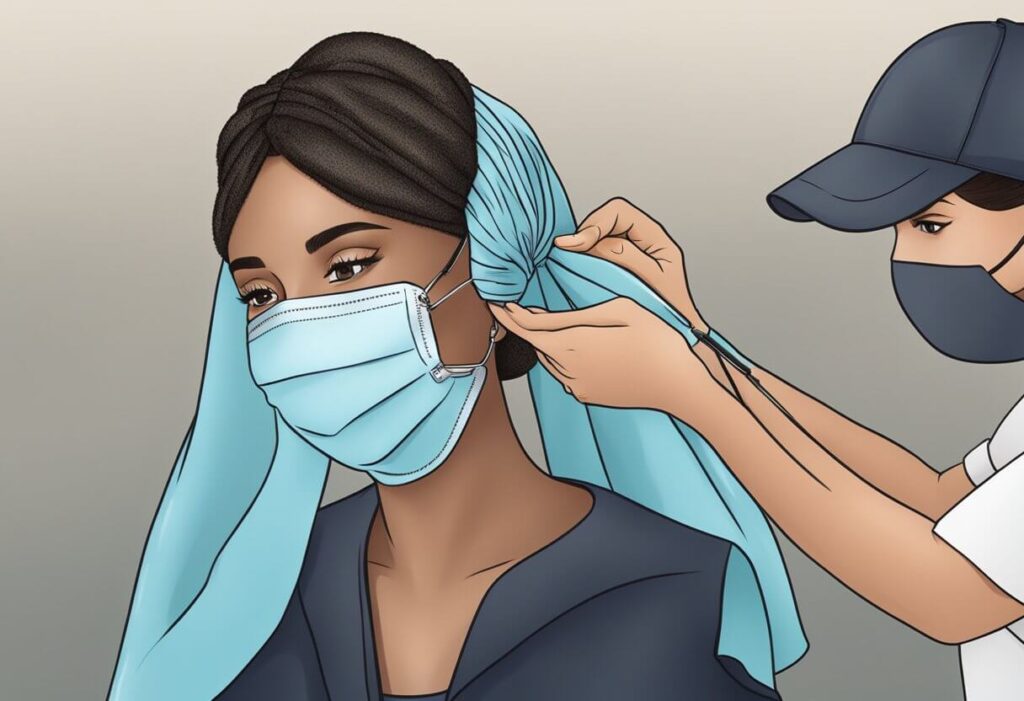
One way I like to protect my hair is by using a bonnet. In this section, I will talk about how to put a bonnet on straight hair.
First of all, I like to make sure my hair is clean and well-nourished before putting on a bonnet.
I follow a simple hair care routine that includes shampooing, conditioning, and applying hair oil or serum to create the right environment for strong hair growth.
Bonnets come in handy for protecting my hair while I sleep. They help prevent friction and tangling, which can lead to breakage and damage.
To put a bonnet on straight hair, I gently gather my hair together and hold it a little above the nape of my neck. Then, I carefully place the bonnet over my head, making sure to tuck all of my hair in properly.
Here are a few additional tips I follow for putting on bonnets:
- Choosing the right bonnet: Opt for a silk or satin bonnet as they are gentle on the hair and help reduce frizz.
- Adjusting the bonnet: Ensure the bonnet fits snugly, but comfortably around my head. It’s crucial that it’s not too tight, as this can cause headaches or damage hair.
- Caring for your bonnet: Washing the bonnet regularly keeps it clean and ready for use.
In summary, wearing a bonnet on straight hair requires following a hair care routine and proper placement.
With the right bonnet choice, adjustment, and care, it’s a fantastic way to protect my hair and maintain its health and beauty.
Bonnet Vs Other Hair Accessories
When it comes to hair accessories, I’ve tried it all: hair caps, satin scarves, silk scarves—the list goes on.
In my experience, a bonnet has been the most effective hair protector, especially for keeping my straight hair in check.

At first, I was skeptical. I mean, who wouldn’t be? There are so many hair accessories and products on the market claiming to be the ultimate solution for breakage, split ends, and maintaining hair styling.
But, when I finally decided to give a bonnet a try, I discovered its numerous benefits.
I used to be a die-hard satin scarf fan, loving the way it felt against my hair. However, I soon found that my hair often slipped out of the scarf during the night.
Switching over to a silk scarf was a nice improvement, but still wasn’t exactly perfect. It still lacked the secure fit I needed. This is where the bonnet really shone.
The snug fit of a bonnet ensures that it stays in place throughout the night. No more waking up to messy hair or a scarf on the other side of the bed!
Plus, the materials used in bonnets, like satin and silk, are gentle on my hair, preventing any unnecessary friction or damage.
In comparison to a traditional hair cap, the bonnet provides much better coverage and protection.
I’ve noticed a significant decrease in split ends and breakage since making the switch. The bonus? It’s super easy to put on and take off.
I’ve come to realize that, while various hair accessories can offer some protection, the bonnet reigns supreme as the ultimate hair guardian.
With its secure fit, materials that are gentle on my tresses, and substantial hair benefits, it’s now my go-to accessory for keeping my straight hair looking its best.
How to secure a bonnet on straight hair at night
To secure a bonnet on my straight hair at night, I first make sure my hair is free of tangles by gently brushing it. Then, I place the bonnet on my head, starting from the front and covering my hairline, slowly pulling it back to cover my entire head. I adjust the elastic band to ensure it’s snug but not too tight, so it stays in place throughout the night.
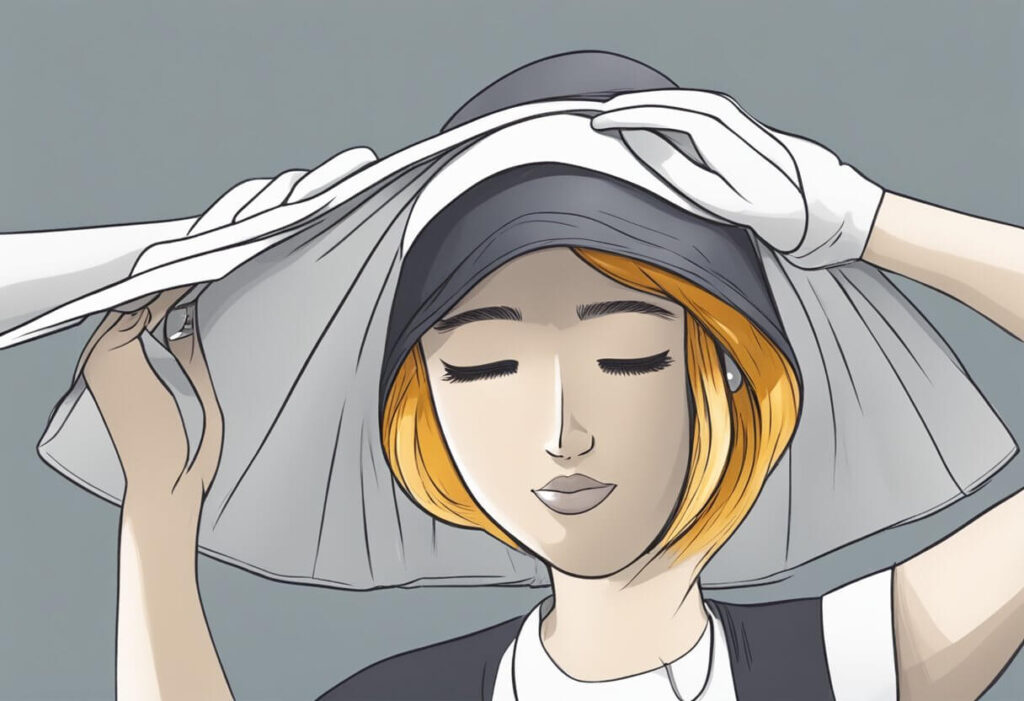
Wearing a bonnet with wet or dry straight hair
When wearing a bonnet with wet straight hair, I make sure to towel dry my hair first so it’s damp, not soaking wet. This prevents excess moisture from creating a humid environment inside the bonnet. With dry straight hair, I simply brush my hair and put the bonnet on as usual.
Putting on a bonnet for short straight hair
For short straight hair, I find it helpful to first gather my hair at the top of my head and secure it with a soft scrunchie or hair tie. This keeps my hair contained while putting on the bonnet. I then follow the same steps of placing the bonnet on my head and adjusting as needed.
Using a bonnet to maintain straight hair with bangs
To maintain my straight hair with bangs while wearing a bonnet, I first brush my bangs to the side or back, then put on the bonnet. This helps prevent kinks and keeps my bangs looking fresh. If needed, I can use a flat iron on low heat to touch up my bangs in the morning.
Choosing the best bonnet for thin straight hair
When choosing a bonnet for my thin straight hair, I look for one made from a smooth, breathable fabric like satin or silk. This helps reduce friction and static, ensuring my hair stays smooth and tangle-free. Adjustable elastic bands are also helpful for finding a secure, yet comfortable fit.
Preventing greasiness while wearing a bonnet on straight hair
To prevent greasiness when wearing a bonnet on my straight hair, I make sure my hair is clean and dry before putting it on. A light dusting of dry shampoo on the roots can also help absorb any excess oil throughout the night. Additionally, selecting a bonnet made of breathable materials, like satin or silk, can help maintain a healthy scalp environment.
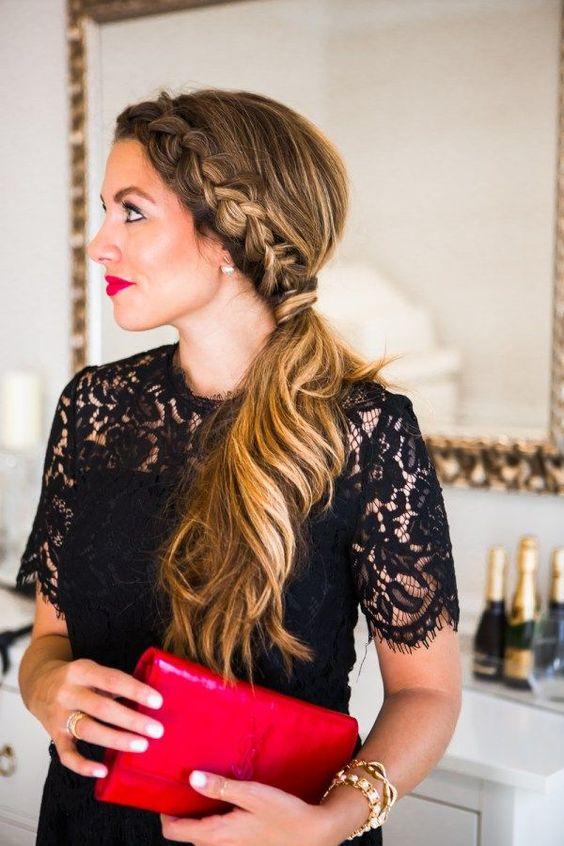
From hair care to soaring hair trends, we cover it all. We make sure you nurture your hair and stay on board with hairstyles and new hair trends. So hop on and make every day count with some of our creative and sassy hair trends.
